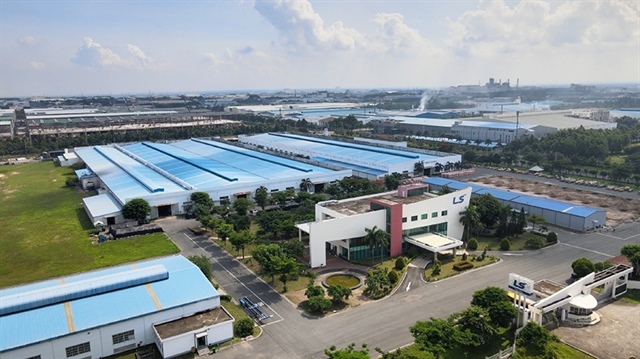Petroleum sector seeks protective policies to counter contraction
Petroleum sector seeks protective policies to counter contraction
Output contraction is an inevitable part of exploiting finite oil and gas fields worldwide. In Viet Nam, most of the active fields have been exploited since 1986. The Viet Nam petroleum sector is calling for more favourable policies from the government, to offset an output drop in the sector.

After decades of extraction, many high-performance fields are approaching the end of their lifep. Output shrank by 15-25 per cent per year. With current fields running out, discovering new fields is the only way to maintain output.
Unfortunately, exploration activities are declining, due to adverse policies. The Viet Nam Petroleum Club (PCV) and the Viet Nam Oil and Gas Group (PVN) are calling for a change in the government’s policies to boost petroleum exploration.
In the past, the government directly reinvested 10-15 per cent of petroleum revenue into exploration activities. Now, petroleum revenue has to be submitted in full to the state budget, before any portion of it can be reinvested in the petroleum sector.
This mechanism delays money flow and has caused a fall in reinvestment in recent years. On top of that, it takes up to US$10-15 million to explore potential petroleum wells, which has a success rate of about 20 per cent. Therefore, a favourable reinvestment mechanism is needed to ensure such risky activities can be carried out.
Inappropriate administrative procedures for getting project approval is another hindrance to new projects. PVN is urging the government to allow the firm to approve projects without regard to the projects’ capital. Furthermore, they want the authority to change technical details in field development plans, as approved by the Prime Minister.
Meanwhile, many regulations in Petroleum Law are believed to discourage investments in small, marginal and depleting fields. PCV suggested the government adjust the profit-sharing mechanism between the State and contractors to attract more investments to such types of fields.
In the short and medium-term, PCV is requesting the government clear a backlog in two major projects, namely Lo B and Ca Voi Xanh, so the two could be placed on production as planned. Likewise, PCV also proposes an operation mechanism be in place for petroleum block 01/97&02/97 and that contractual terms are developed for block 01/17&02/17. It is hoped that these moves will encourage more investments.
Along with oil output, PVN’s gas extraction is planned to be cut next year due to difficulties in selling gas, especially gas for electricity production. It is worth noting that 80 per cent of PVN’s gas sales were marked for electricity production.
In the first nine months of 2021, sales of gas for power generation amounted to just 72 per cent of the firm’s figure in the same period last year, and just 70 per cent of its plan.
Compared to the targets assigned by the Ministry of Industry and Trade, gas sales only reached 84 per cent in the southeast region and 70 per cent in the southwest region. Due to various risks associated with extraction activities, PVN allows a mismatch of 10 per cent between planned and real output.
PVN's General Director Le Manh Hung underlined the group has made its exploration and extraction activities a top priority. As the potential of Viet Nam’s petroleum sector remains enormous, those activities should be carried out smoothly in order to attract more investors and generate new income for the country.


























